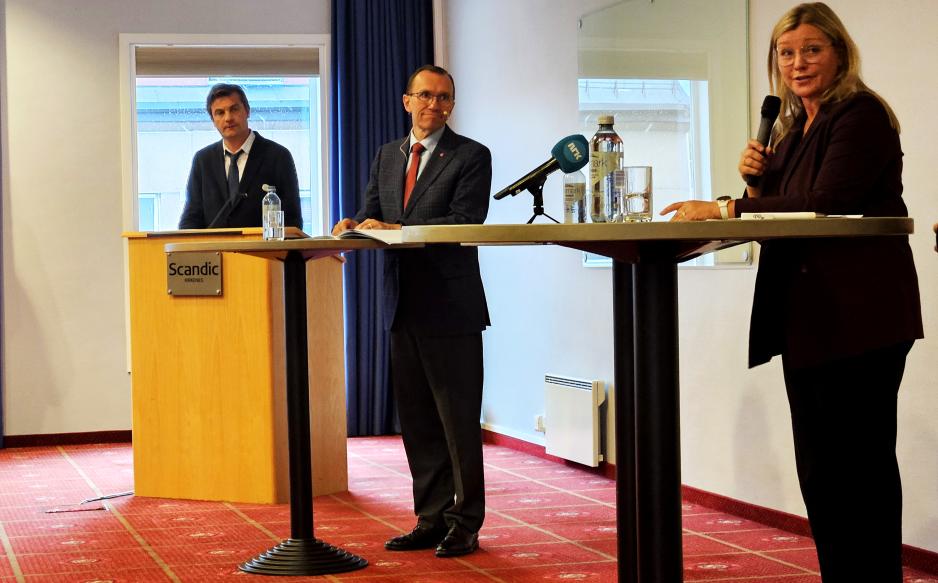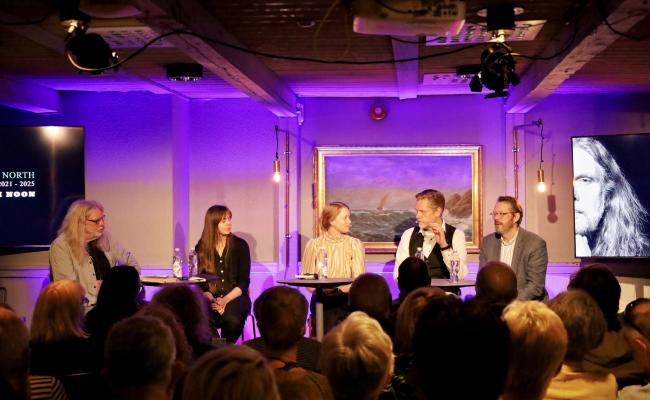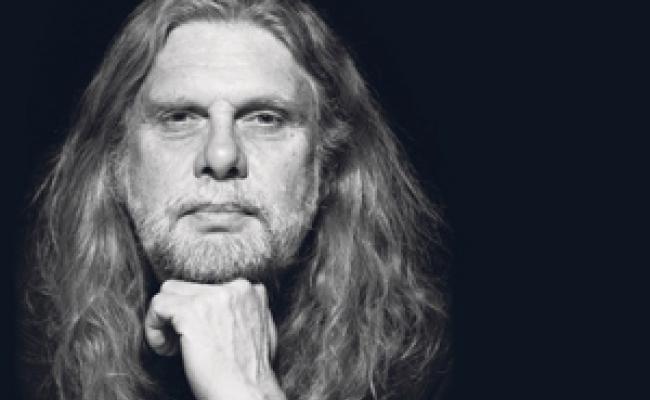Arne O. Holm says Norway’s High North Strategy: The Same Slogans, but an Entirely Different and Dramatic Situation

Minister of Foreign Affairs Espen Barth Eide and Minister of Local Government and Regional Development Kjersti Stenseng during Tuesday's presentation of the government's Arctic Strategy in Kirkenes. (Photo: Arne O. Holm)
Comment from Kirkenes, Northern Norway: The Norwegian Minister of Foreign Affairs Espen Barth Eide was state secretary in the Ministry of Defense when the Labor Party launched its first Arctic policy. Now, 20 years later, the problems remain the same, but the security policy situation is completely different.
This is a comment written by a member of the editorial staff. The comment expresses the writer's opinions.
Or as the Minister of Foreign Affairs said from the podium here in Kirkenes, east in Norway on the border with Russia, when he presented the government's High North Strategy:
"We are facing a whole new reality. We are in the middle of the most dramatic security policy situation since World War II.
High time
It was therefore time for an updated High North Strategy. The last official document is a white paper from the Solber Cabinet in 2020-2021. The title then was "People, Opportunities, and Norwegian Interests in the North."
Since then, both people and opportunities have declined, an ongoing trend that can be traced back to 2005, when the Arctic Policy shifted from a military focus to a civilian one in the nation of Norway.
In other words, the Solberg Cabinet's white paper came long after Russia had attacked Ukraine, but preceded our understanding of the overshadowing threat of war that materialized in Europe in February 2022, when Russia launched a full-scale invasion of Ukraine, and has since cold-bloodedly continued the war.
Most dramatic situation since World War II.
Although the previous white paper contained clear warnings against an aggressive Russia, cooperation with the country was a central part of it, both in business and politics.
The same applied to the platform on which the Centre Party and the Labour Party were to govern on later that year, the Hurdal Platform.
The platform descriped the High North as "Norway's most important peace project," in addition to the already estasblished description of the "High North as Norway's most important strategic area of investment."
In other words, a political majority still emphasized cooperation with Russia as late as in 2021. Russia's annexation of Crimea was not enough to alter that.
Without success
Since 2020, the population in the North has continued to decline, excluding refugees who have come to the country, and our relative share of Norway's population has dropped from just over 10 percent to just over nine percent. Private, national investments are lacking, and the population is aging.
Cooperation with Russia was central.
It is an international trend, but its international influence increases in an area with such strategic and military significance as Northern Norway.
The overarching goal with all white papers and strategies is to turn this development around.
This has not succeeded so far.
The question is therefore whether the government will succeed with its new strategy.
The most important engine in the government's strategy is the defense cooperation with Sweden and Finland after the countries joined NATO.
Also read
When I ask Barth Eide about which measures are directed toward businesses in the new strategy, he points to the business opportunities in this cooperation.
The question that remains is how Northern Norwegian businesses can get into a position in which they win contracts aimed at the overall total defense.
Next year, the government is allocating NOK 12 million for regional and municipal measures for local delivery to the Armed Forces. This will be distributed over a part of the country that extends from south of Brønnøysund to Kirkenes, a total of 83 municipalities.
I know our readers can do the math for themselves.
I must also add that the government will spend a total of NOK 106 million in 2026 on a mix of travel grants for sports teams, business and local community development, decentralized youth services, and the search for new mineral industries.
No price tag
NOK 1 billion will also be allocated for ten years of Arctic Ocean research (see separate article).
This may have a greater impact on the business sector than measures that have not yet been assigned a price tag.
A national action zone for total preparedness is being worked on, a proposal by the Total Preparedness Commission.
In addition, a state national competence center for the High North, located in Kirkenes, is underway. This also includes cooperation with Sweden and Finland, across several ministries.
Perhaps some expected clear signals of state contributions to the reopening of the ore mine in Kirkenes, which has been pointed out as an explicit strengthening of the labor market in the region. That didn't happen, but the Minister of Foreign Affairs emphasized to High North News that the government is working on the mine.
Also read (the article continues below)
The strategy document reads: "The government has expressed support for new operations in Sydvaranger mines." Barth Eide also emphasized the strategic significance of iron ore produced in the peaceful part of the world.
From other sources, I know that there is a discussion within the government about state guarantees, not loans, to the new owners, the Swedish Grangex.
The strategy presents five prioritized areas of focus that, apart from the new security policy situation, are almost identical to the slogans of the last 20 years.
They revolve around good and safe local communities, infrastructure that builds community, security, activity, and preparedness, and business development that creates value.
All of this is recognizable in an unrecognizable world situation.
Wealth tax
So far, there has been no shortage of visits from national politicians in the North during their election campaigns.
First attempt at a comprehensive presentation.
In the last few days alone, the Labor Party has mobilized the Prime Minister, the Minister of Foreign Affairs, the Minister of Local Government and the Minister of Transport.
Previously, the leader of the Conservative Party, Erna Solberg, and the leader of the Progress Party, Sylvi Listhaug, have visited the North.
The government's High North Strategy is nevertheless the first attempt at a comprehensive presentation of the situation in the North, in an election campaign that largely revolves around wealth tax.
In Northern Norway, the total wealth tax amounts to a mere NOK 1.5 billion, but still enough to dominate the election campaign.
Perhaps the government's new High North Strategy could be the prelude to a debate that takes "the High North as Norway's most important strategic area of investment" seriously.




